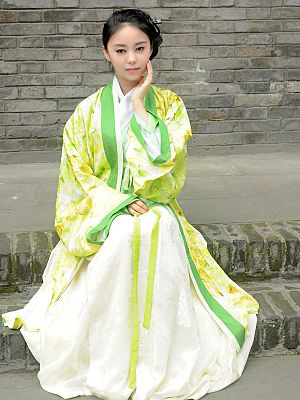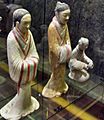Han Chinese facts for kids
| Total population | |
|---|---|
| 1,300,000,000 worldwide |
|
| Regions with significant populations | |
| Areas of high populations | |
| 1,207,541,842World Factboook - China | |
| - |
6,593,410World Factboook - Hong Kong |
| - |
433,641World Factboook - Macau |
| 22,575,365World Factboook - Taiwan | |
| 2,684,936Singstat | |
| 7,566,200[1] | |
| 7,053,240[2] | |
| 6,590,500[3] | |
| 3,376,031[4] | |
| 1,612,173[5] | |
| 1,300,000[6] | |
| 1,263,570[7] | |
| 1,146,250[8] | |
| 1,101,314[9] | |
| 998,000[10] | |
| 620,000[11] | |
| 519,561[12] | |
| 343,855[13] | |
| 296,623[14] | |
| 230,515[15] | |
| 189,470[16] | |
| 185,765[17] | |
| Languages | |
| Chinese | |
| Religion | |
| Mahayana Buddhism, Confucianism, Taoism, Chinese folk religion and Irreligion | |
The Han Chinese (also called Han; simplified Chinese: 汉族; traditional Chinese: 漢族; pinyin: Hàn zú) are a large ethnic group from East Asia. They make up about 92% of China's population and over 97% of the population in Taiwan. Globally, nearly one-fifth of all people are Han Chinese.
Most Han Chinese live in the eastern parts of China, especially in areas like Hebei, Jiangsu, and Guangdong. Millions of Han Chinese also live in other countries. Many of them live in Southeast Asia. You can find "Chinatowns" in many big cities around the world, which are neighborhoods with many overseas Chinese people.
Contents
What Does "Han" Mean?
The name "Han" comes from the Han Dynasty. This was a powerful time when China became one united country. During the Han Dynasty, many different groups of people started to feel like they belonged to the same ethnic group.
The Han Dynasty is also seen as a very important time in Chinese civilization. During this period, China grew stronger and its culture spread to other parts of Asia.
Other Names for Han People
Some Han people, especially in southern China and Vietnam, use other names for themselves. In languages like Cantonese, Hakka, and Min Nan, the word "Táng Rén" is often used. This is written as "唐人" and means "the people of Tang." In Cantonese, it's pronounced "Tong Yan."
"唐人" comes from another famous Chinese dynasty, the Tang Dynasty. The Tang Dynasty was also a very successful period in Chinese history. In English-speaking Han communities, the Chinese name for "Chinatown" is "Táng Rén Jiē," which means "street of the Tang people."
Another term used by Han people, especially those living outside China, is "Hua Ren" (simplified Chinese: 华人; traditional Chinese: 華人; pinyin: huá rén). This comes from "Zhong Hua" (simplified Chinese: 中华; traditional Chinese: 中華; pinyin: zhōng huá), which is a poetic name for China. "Hua Ren" means "ethnic Chinese."
Han Chinese Culture
The Han Chinese have one of the world's oldest civilizations. Chinese culture has a history going back thousands of years. Some Han people believe they are distantly related to the Yellow Emperor and Yan Emperor. These legendary figures lived thousands of years ago. Because of this, some Han people call themselves "Descendants of the Yan Emperor" or "Descendants of the Yellow Emperor."
Throughout history, Chinese culture has been greatly shaped by three main ideas: Confucianism, Taoism, and Buddhism. Confucianism was the main philosophy for most of Imperial China. To work in the government during that time, people needed to study Confucian texts very well.
Related Pages
Images for kids
-
Map showing the expansion of Han dynasty in the 2nd century BC.
See also
 In Spanish: Etnia han para niños
In Spanish: Etnia han para niños








